A few exhibits from the British Museum's early Britain and Europe rooms are listed as having been found via a metal detectorist. In the news today was a story about a new find by a metal "detectorist" of over 5000 Anglo-Saxon coins in a field in Buckinghamshire. It's quite a dream to dig up buried treasure.
One of the most beautiful examples of this was dug up from a field in Norfolk in the late 1950's: the Great Torc shown below :
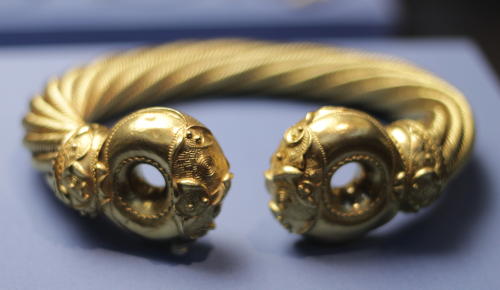
A torc is a piece of jewellery or decoration worn round the neck and the beauty and complexity of this one is staggering considering it was made sometime in the early first century BC.
The torc is made from just over a kilogram of gold mixed with silver. It is made from sixty-four threads. Each thread was 1.9 mm wide. Eight threads were twisted together at a time to make 8 separate ropes of metal. These were then twisted around each other to make the final torc. The ends of the torc were cast in moulds. The hollow ends were then welded onto the ropes.
This is a wonderful example of Celtic design from the British Isles.
In the same room at the museum we find this :
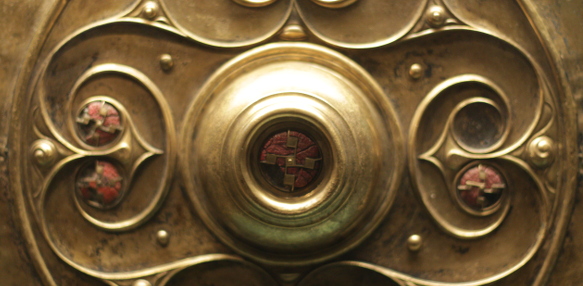
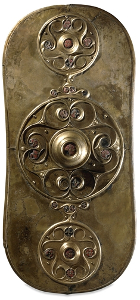
Above is a detail from the Battersea Shield, found in the River Thames in 1857. It has no battle damage and is thought to be more ceremonial than martial, perhaps thrown into the water as a votive offering (iron-age people, including the Celtic-type, had a strong relationship with cross-roads and waterways). No one really knows the reason for it being found here.
Going even further back, we have the Folkton Drums, one of which is shown below.
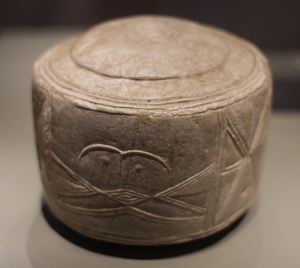
These are neolithic (dated between 2600-2000 BC) and found on Folkton Wold in 1889. It is not clear what they are but they have been carved into geometric shapes and buried with a child.
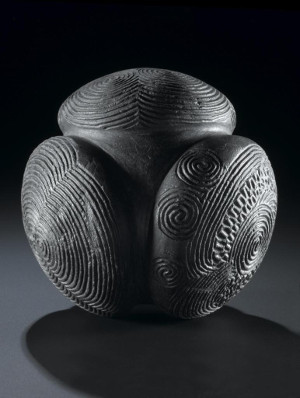
The Folkton Drums are apparently unique, but remind me a little of the carved stone balls found in Scotland, also dated to roughly 2500 BC. See more of these at the National Museum of Scotland.



